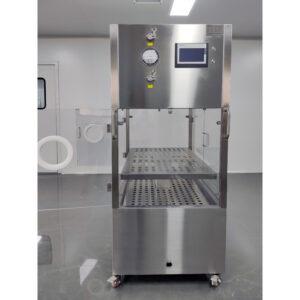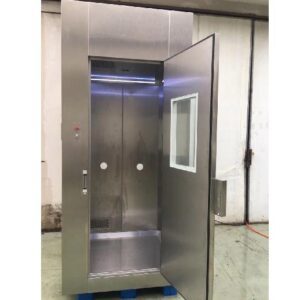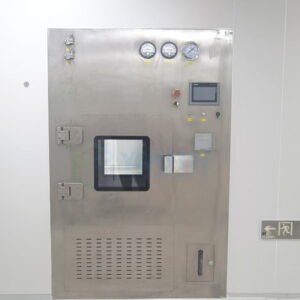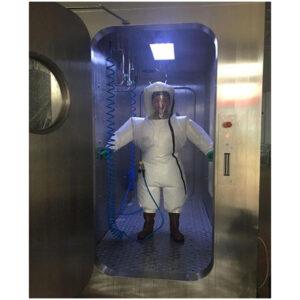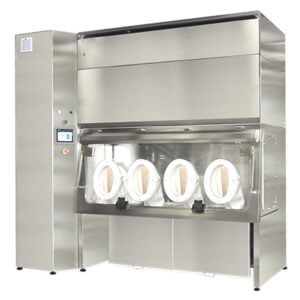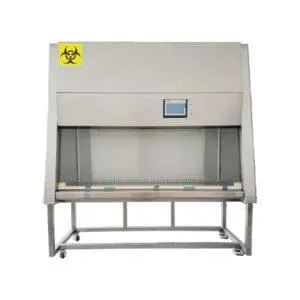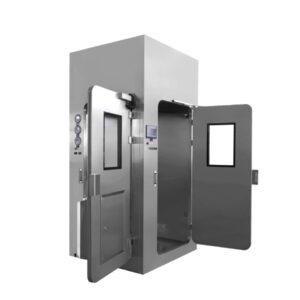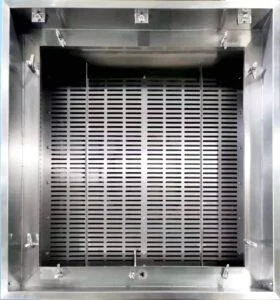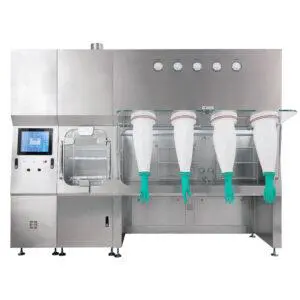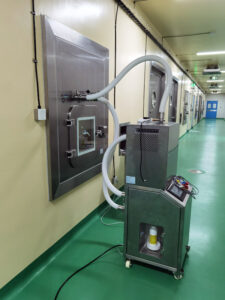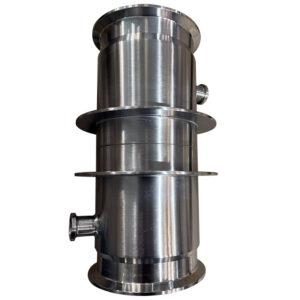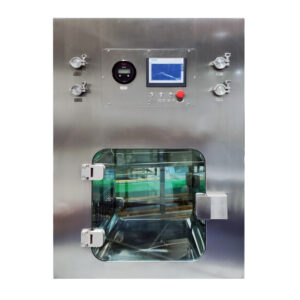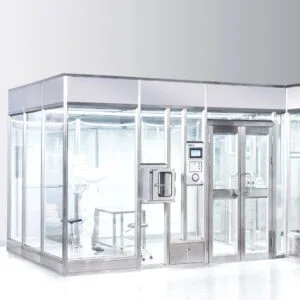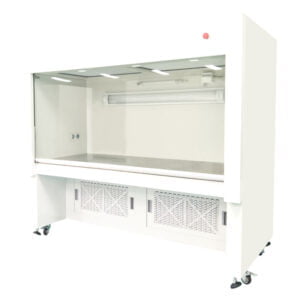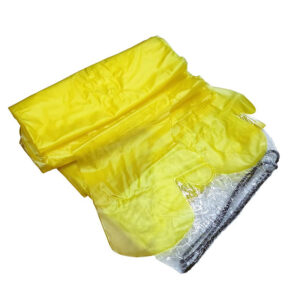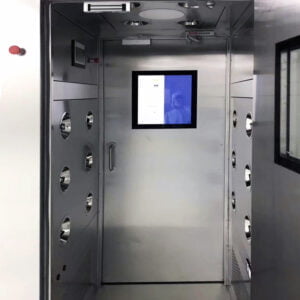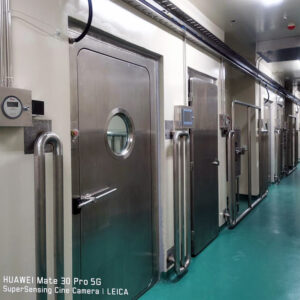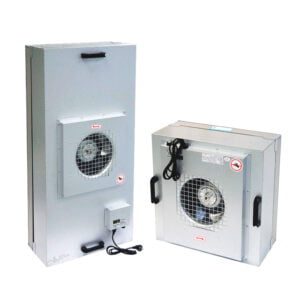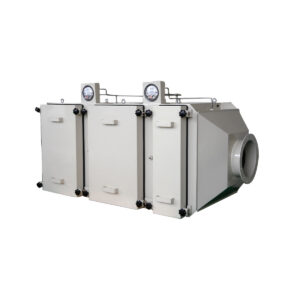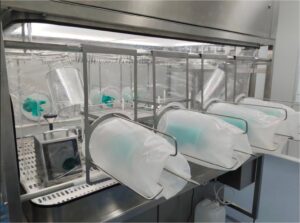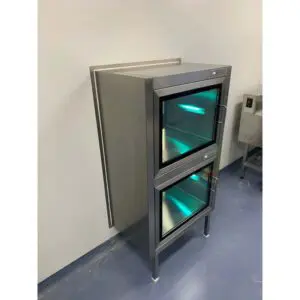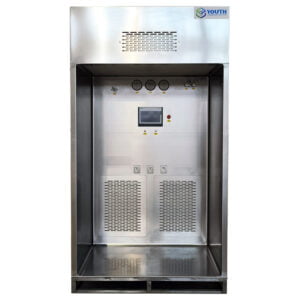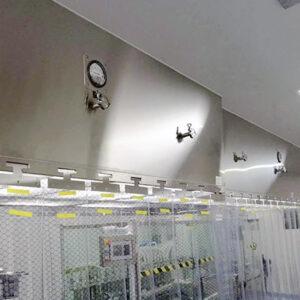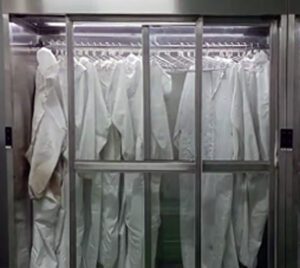When pharmaceutical companies and research facilities invest in containment systems, they face a complex procurement landscape where a single wrong decision can compromise both safety protocols and operational budgets. The BIBO procurement process demands meticulous attention to technical specifications, regulatory compliance, and long-term operational considerations that extend far beyond initial purchase price.
Consider this scenario: A leading pharmaceutical research facility recently experienced a six-month project delay because their newly installed containment system couldn’t integrate with existing HVAC infrastructure. This costly oversight, stemming from inadequate supplier evaluation, resulted in $2.3 million in lost productivity and emergency retrofitting expenses. Such incidents underscore the critical importance of comprehensive vendor assessment in biosafety equipment procurement.
The consequences of rushed or incomplete BIBO supplier evaluation extend beyond immediate financial impact. Inadequate containment performance can trigger regulatory violations, expose personnel to hazardous materials, and fundamentally compromise research integrity. Without proper evaluation frameworks, organizations risk selecting vendors who cannot deliver the precise containment levels, operational reliability, and ongoing support that critical applications demand.
This comprehensive BIBO procurement guide provides procurement professionals with systematic evaluation methodologies, proven assessment criteria, and practical implementation strategies developed through extensive industry experience and validated by successful installations worldwide. YOUTH Clean Tech has supported countless facilities in navigating these complex procurement decisions, and the insights presented here reflect both technical expertise and real-world application knowledge.
What is BIBO Procurement and Why Does It Matter?
BIBO procurement encompasses the systematic acquisition of Bag-In-Bag-Out containment systems designed for safe handling of hazardous materials in controlled environments. Unlike standard equipment purchases, BIBO procurement requires deep understanding of containment principles, regulatory frameworks, and operational integration challenges that can significantly impact facility safety and productivity.
The bag-in-bag-out methodology represents a critical containment strategy where hazardous materials remain completely isolated within sealed bag systems throughout filter change and maintenance procedures. This approach eliminates direct personnel exposure while maintaining continuous containment integrity—a fundamental requirement in pharmaceutical manufacturing, biological research, and chemical processing applications.
Modern BIBO systems integrate sophisticated monitoring capabilities, automated safety protocols, and advanced filtration technologies that demand careful vendor evaluation. According to recent industry analysis, facilities implementing comprehensive BIBO procurement processes report 40% fewer post-installation modifications and 65% higher long-term satisfaction rates compared to organizations using simplified vendor selection approaches.
The procurement complexity stems from the intersection of technical performance requirements, regulatory compliance mandates, and operational efficiency goals. Each application presents unique containment challenges that require customized solutions, making standardized procurement approaches inadequate for most professional installations. In our experience, successful BIBO procurement depends heavily on vendor capability assessment, technical specification alignment, and long-term support evaluation.
| Procurement Factor | Impact Level | Evaluation Priority |
|---|---|---|
| Technical Compliance | Critical | Primary |
| Integration Capability | High | Primary |
| Support Infrastructure | High | Secondary |
| Cost Considerations | Medium | Secondary |
How to Identify Critical Requirements for BIBO Systems?
Containment Level Specifications
Determining appropriate containment levels forms the foundation of effective BIBO system specification. Pharmaceutical applications typically require OEB (Occupational Exposure Band) classifications ranging from OEB 3 to OEB 5, with corresponding containment performance standards measured in nanograms per cubic meter. These specifications directly influence system design, filtration requirements, and operational protocols that vendors must accommodate.
Recent regulatory updates have introduced more stringent containment verification requirements, including real-time monitoring capabilities and automated documentation systems. The FDA’s revised guidance documents now mandate continuous containment verification for high-potency active pharmaceutical ingredients, requiring BIBO systems to incorporate advanced leak detection and performance monitoring technologies.
Operational Environment Assessment
Environmental conditions significantly impact BIBO system performance and vendor selection criteria. Temperature fluctuations, humidity levels, and pressure differential requirements must align with vendor capabilities and system specifications. For instance, facilities operating in tropical climates require enhanced moisture management features that not all suppliers can provide effectively.
Integration with existing facility infrastructure presents additional complexity layers that require thorough assessment. HVAC compatibility, electrical requirements, and spatial constraints often determine vendor suitability more than basic performance specifications. A comprehensive environmental assessment revealed that 60% of BIBO installations require some level of infrastructure modification, making vendor flexibility and engineering support capabilities essential selection criteria.
Integration Requirements
Seamless integration with process equipment, automation systems, and facility management platforms requires vendors with demonstrated integration expertise and comprehensive technical support capabilities. Modern pharmaceutical facilities increasingly demand Industry 4.0 compatibility, including IoT connectivity, predictive maintenance capabilities, and enterprise system integration that traditional BIBO suppliers may not fully support.
The complexity of integration requirements has grown substantially with the adoption of continuous manufacturing processes and automated handling systems. Bag-in-bag-out systems must now interface with multiple upstream and downstream processes while maintaining containment integrity and operational flexibility.
What Should Your BIBO Supplier Evaluation Checklist Include?
Technical Certification Standards
Comprehensive supplier evaluation begins with verification of relevant certifications and compliance credentials. ISO 14644 cleanroom standards, cGMP manufacturing compliance, and ASME AG-1 nuclear grade requirements represent baseline certification expectations for professional BIBO suppliers. However, certification verification extends beyond simple documentation review to include audit trail examination and ongoing compliance monitoring capabilities.
Third-party validation through organizations like NSF International or TÜV provides additional assurance of vendor technical capabilities. Industry data indicates that suppliers with multiple third-party certifications demonstrate 75% fewer post-installation compliance issues compared to vendors relying solely on self-certification processes.
“The most costly mistakes in BIBO procurement stem from inadequate certification verification. Organizations must look beyond surface-level documentation to understand true vendor capabilities and compliance depth.” – Senior Procurement Director, Major Pharmaceutical Company
Manufacturing Quality Controls
Vendor manufacturing quality systems directly impact product reliability, consistency, and long-term performance. ISO 9001 certification provides basic quality framework validation, but professional BIBO applications require more stringent quality controls including statistical process control, comprehensive material traceability, and validated assembly procedures.
Manufacturing facility audits reveal critical insights about vendor capabilities that standard documentation cannot provide. During recent supplier assessments, we discovered significant variations in quality control sophistication, with leading vendors implementing Six Sigma methodologies and real-time quality monitoring while others relied on basic inspection protocols.
Post-Installation Support Capabilities
Long-term vendor support capabilities often determine overall procurement success more than initial product performance. Comprehensive support evaluation should assess technical training programs, spare parts availability, emergency response capabilities, and ongoing maintenance support infrastructure. The most sophisticated BIBO systems require specialized knowledge for optimal operation and maintenance.
Vendor support evaluation must include geographic coverage analysis, response time commitments, and escalation procedures for critical issues. Facilities operating in remote locations or international markets require vendors with global support infrastructure and local technical expertise.
| Support Category | Evaluation Criteria | Minimum Standard |
|---|---|---|
| Technical Training | Comprehensive curriculum, hands-on components | 40+ hours initial training |
| Spare Parts | Inventory availability, delivery times | 48-hour critical parts delivery |
| Emergency Response | 24/7 availability, qualified technicians | 4-hour response commitment |
How to Navigate Common BIBO Procurement Challenges?
Budget vs. Performance Trade-offs
Balancing initial capital investment with long-term operational costs requires sophisticated financial analysis that extends beyond simple purchase price comparison. Total cost of ownership calculations must incorporate energy consumption, maintenance requirements, consumables costs, and potential productivity impacts over the system’s operational lifetime, typically spanning 15-20 years for professional installations.
Our analysis of recent BIBO procurements revealed that lowest-bid selections resulted in 35% higher total costs over five-year periods due to increased maintenance requirements, higher consumables costs, and reduced operational efficiency. This data underscores the importance of comprehensive financial modeling in vendor selection processes. While budget constraints remain real considerations, organizations must evaluate long-term cost implications when making procurement decisions.
Performance compromises often manifest in subtle ways that become apparent only during extended operation. Reduced containment efficiency, increased maintenance frequency, and limited upgrade capabilities can significantly impact operational costs and facility productivity over time.
Lead Time and Delivery Complications
Extended lead times for specialized BIBO systems create procurement planning challenges that require early vendor engagement and careful project scheduling. Current market conditions show average lead times ranging from 16-24 weeks for standard configurations, with custom applications requiring 28-36 weeks for complete delivery and installation.
Supply chain disruptions have introduced additional complexity into BIBO procurement timelines, making vendor supply chain resilience a critical evaluation factor. Suppliers with diversified component sourcing and strategic inventory management demonstrate superior delivery reliability compared to vendors dependent on single-source suppliers or just-in-time manufacturing approaches.
Which BIBO Vendor Assessment Criteria Guarantee Success?
Financial Stability and Market Reputation
Vendor financial stability analysis protects organizations from supplier disruption risks that could compromise long-term support and parts availability. Financial evaluation should include credit rating assessment, revenue stability analysis, and market position evaluation within the biosafety equipment sector. Suppliers with strong financial foundations demonstrate greater capacity for ongoing R&D investment and long-term support commitment.
Market reputation assessment through customer references, industry recognition, and installation base analysis provides valuable insights into vendor reliability and performance consistency. Leading BIBO suppliers typically maintain installation bases exceeding 500 units globally, with demonstrated success across diverse application areas and geographic markets.
Customization and Scalability Options
Application-specific customization capabilities enable vendors to address unique containment challenges and integration requirements that standard products cannot accommodate. Vendor evaluation should assess engineering capabilities, customization experience, and design flexibility for addressing specialized performance requirements or spatial constraints.
Scalability considerations become increasingly important as facilities expand operations or modify processes over time. Advanced BIBO containment systems should accommodate future capacity increases, process modifications, and technology upgrades without requiring complete system replacement.
Future-proofing capabilities, including IoT integration potential, automation compatibility, and upgrade pathways, ensure long-term investment protection and operational flexibility. The most successful BIBO installations incorporate expansion capabilities and technology upgrade provisions from initial implementation.
How to Implement a Systematic BIBO Purchasing Process?
Request for Proposal Development
Comprehensive RFP development establishes clear evaluation criteria and enables accurate vendor comparison across critical performance dimensions. Effective BIBO RFPs should specify containment performance requirements, integration parameters, compliance standards, and support expectations with sufficient detail to enable accurate vendor responses while avoiding unnecessarily restrictive specifications.
Technical specification development requires input from operations, engineering, regulatory affairs, and maintenance teams to ensure comprehensive requirement coverage. The most successful RFPs balance detailed technical requirements with operational flexibility, enabling vendor innovation while maintaining essential performance standards.
Evaluation Matrix Creation
Systematic evaluation matrices enable objective vendor comparison and defensible selection decisions. Effective matrices weight evaluation criteria according to application priorities, incorporate both quantitative and qualitative assessment factors, and provide clear scoring methodologies that eliminate subjective bias from selection processes.
Pilot testing or demonstration programs provide valuable validation opportunities for critical vendor selection decisions. While not always practical for large BIBO systems, component testing, simulation programs, or reference site visits can provide crucial performance validation before final procurement commitment.
| Evaluation Category | Weight (%) | Key Metrics |
|---|---|---|
| Technical Performance | 35 | Containment efficiency, reliability data |
| Compliance & Certification | 25 | Regulatory approvals, quality systems |
| Support Infrastructure | 20 | Training, maintenance, parts availability |
| Commercial Terms | 15 | Pricing, warranty, delivery timeline |
| Innovation & Future-Proofing | 5 | Upgrade capabilities, technology roadmap |
The evolution toward more sophisticated containment requirements and Industry 4.0 integration continues reshaping BIBO procurement landscapes. Organizations implementing systematic supplier evaluation processes report significantly higher satisfaction rates, reduced total ownership costs, and improved operational reliability compared to those using simplified vendor selection approaches.
By following comprehensive evaluation frameworks, establishing clear performance criteria, and maintaining focus on long-term operational requirements rather than short-term cost optimization, procurement professionals can navigate BIBO supplier selection complexity while achieving optimal outcomes. The investment in thorough vendor evaluation pays dividends through enhanced system performance, reduced operational risks, and improved facility safety throughout the system’s operational lifetime.
For organizations ready to implement professional BIBO procurement processes, comprehensive containment solutions await evaluation through systematic supplier assessment methodologies that prioritize both immediate performance requirements and long-term operational success.
Frequently Asked Questions
Q: What is a BIBO Procurement | Supplier Evaluation Checklist and why is it important?
A: A BIBO Procurement | Supplier Evaluation Checklist is a structured tool used to assess and compare potential or existing suppliers based on key criteria such as quality, price, delivery, and compliance. It helps organizations ensure they choose reliable suppliers who meet business requirements, reduce risks, and maintain consistent product and service standards. Using this checklist promotes efficient procurement decisions and strengthens supplier relationships.
Q: What key criteria should be included in a BIBO Procurement | Supplier Evaluation Checklist?
A: The checklist typically covers:
- General information: supplier contact, certifications, financial stability
- Product/service quality: adherence to specifications, consistency
- Pricing: competitiveness and transparency
- Delivery performance: timeliness and flexibility
- Capacity and capability: ability to meet demand and innovate
- Compliance: regulatory and ethical standards
- Communication: responsiveness and customer service
Including these areas ensures a comprehensive supplier assessment.
Q: How can I use the BIBO Procurement | Supplier Evaluation Checklist to improve supplier performance?
A: By regularly evaluating suppliers against the checklist, you can identify strengths and areas needing improvement. Share feedback with suppliers to encourage quality enhancements, better pricing, or improved delivery times. The checklist also facilitates objective decision-making, supports negotiations, and helps prioritize strategic partnerships. Tracking these metrics over time fosters continuous improvement and more resilient supply chains.
Q: At what frequency should I conduct supplier evaluations using the BIBO Procurement | Supplier Evaluation Checklist?
A: Supplier evaluations should typically occur:
- After onboarding a new supplier
- On a regular schedule (e.g., quarterly, biannually, or annually) depending on how critical the supplier is to your business
- When there are performance concerns or changes in requirements
Regular evaluations ensure suppliers meet evolving standards and help address issues proactively.
Q: Can the BIBO Procurement | Supplier Evaluation Checklist be customized for different industries or businesses?
A: Yes, the checklist can and should be tailored based on industry requirements, product types, and company priorities. For example, compliance criteria might vary for food suppliers versus electronics manufacturers, or pricing terms might differ depending on purchase volumes. Customizing the checklist ensures relevant factors are measured accurately, making supplier evaluations more effective and aligned with business needs.
Q: Who should be involved in using the BIBO Procurement | Supplier Evaluation Checklist?
A: Procurement managers usually lead the evaluation process, with input from quality assurance, finance, project management, and compliance teams. Collaboration ensures a well-rounded assessment covering all supplier impact areas. Cross-functional involvement helps align supplier selection with broader organizational goals and compliance requirements.
External Resources
- Supplier Evaluation Criteria Checklist – Offers a detailed supplier evaluation checklist covering general information, product quality, pricing, delivery performance, compliance, and communication to guide procurement professionals.
- Supplier Evaluation: A Concise Checklist – Provides a practical supplier performance evaluation checklist with key parameters such as price, quality, delivery, compliance, and innovation tailored to procurement needs.
- Vendor Rating: The Complete Procurement Guide For 2025 – Explains how to implement vendor rating systems and includes essential supplier evaluation criteria and scoring methodologies for procurement managers.
- Supplier evaluation checklist – Features a comprehensive supplier evaluation checklist template for rating suppliers across essential areas like quality control, pricing, delivery, and sustainability.
- Supplier Performance Evaluation Checklist & Best Practices – Shares a supplier performance evaluation checklist with best practices for procurement professionals to assess supplier reliability and manage improvement.
- Supplier Evaluation Checklist Template – Provides downloadable supplier evaluation checklist templates in various formats, facilitating standardized vendor assessment in procurement processes.
Related Contents:
- Best BIBO Suppliers | Vendor Selection & Evaluation
- Biosafety Equipment Vendor Assessment | Due Diligence | Selection Process
- Cleanroom Equipment Procurement | Supplier Assessment Guide
- Laboratory Purification Equipment Suppliers | Vendor Selection | Procurement Guide
- Cleanroom Air Filter Supplier Guide | Vendor Selection Criteria
- Laminar Flow Cabinet Suppliers | Vendor Selection Guide
- Cleanroom Shower Vendor Selection | Procurement Criteria Checklist
- Top BIBO Manufacturers | Quality Assessment Guide
- BIBO vs. Traditional Containment: Which is Better?
